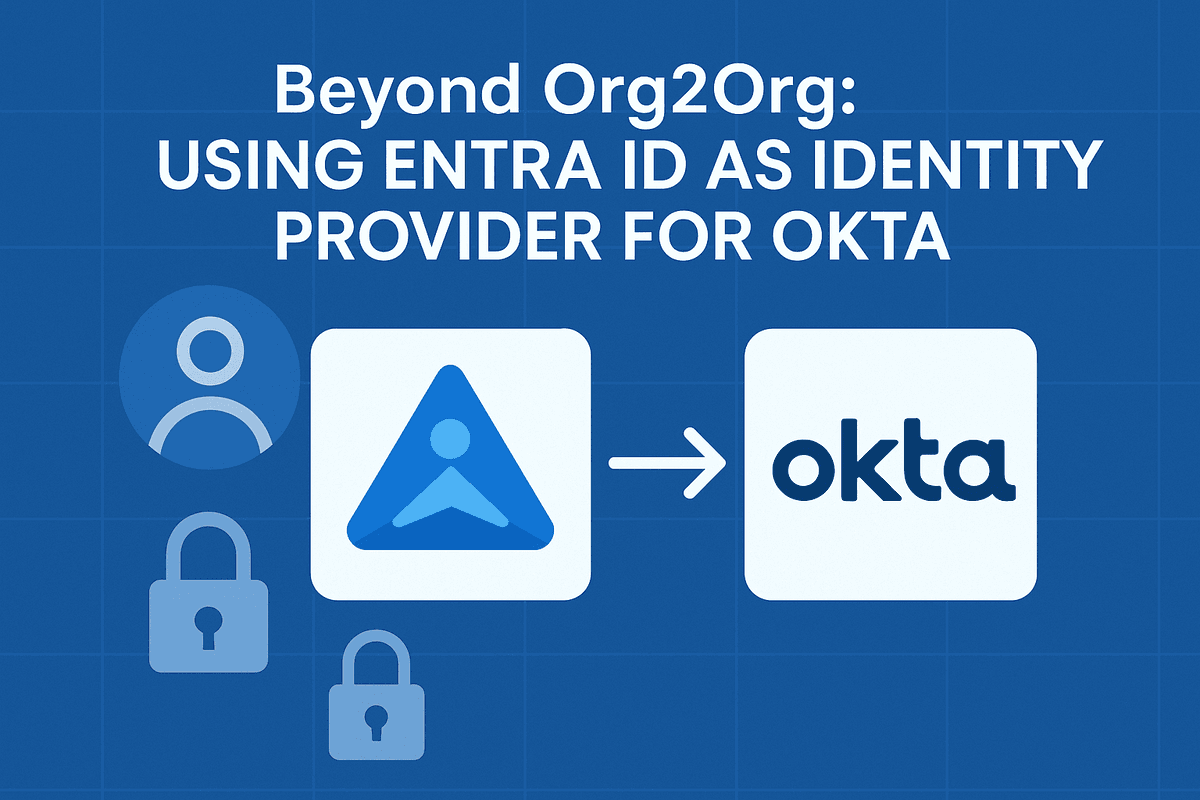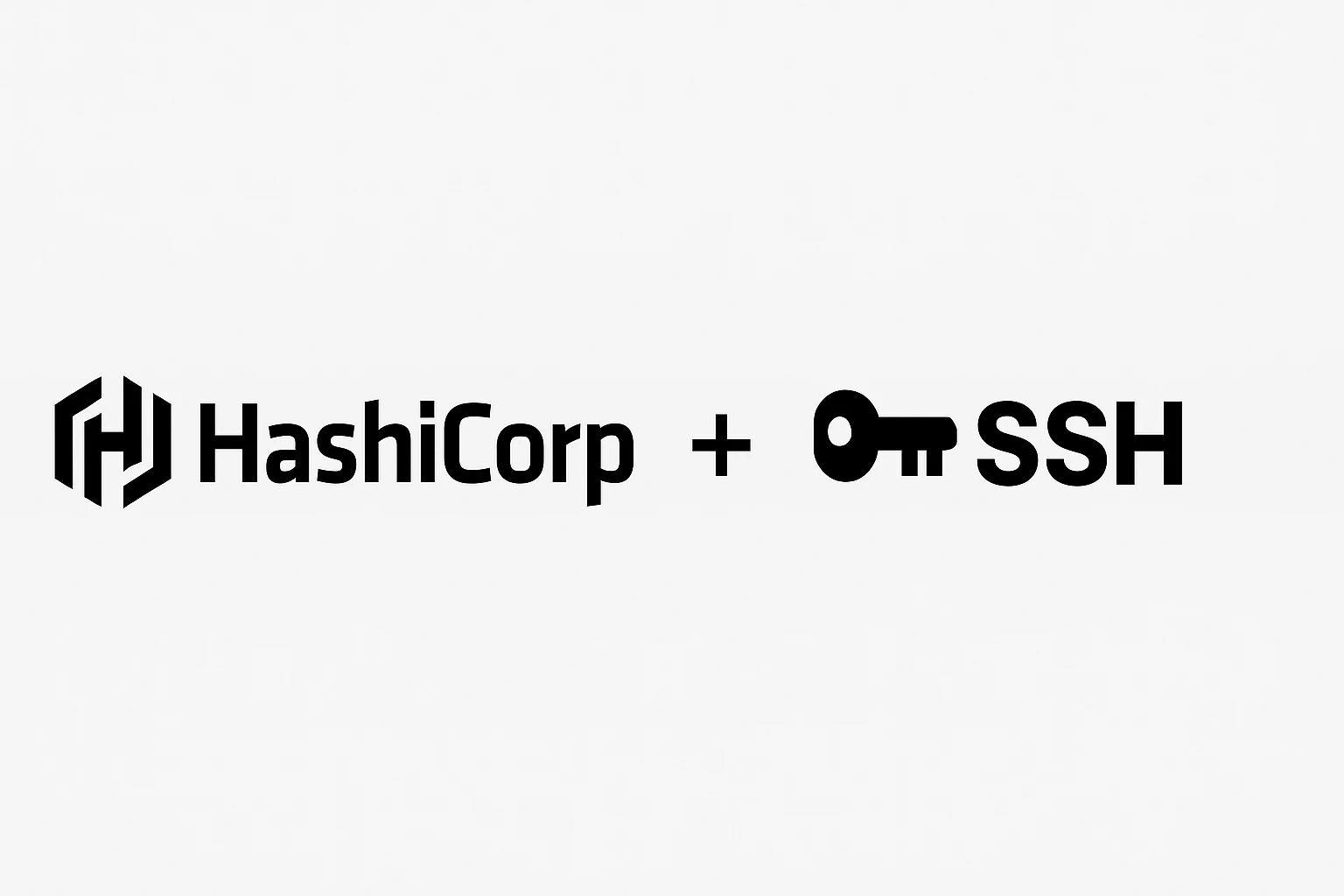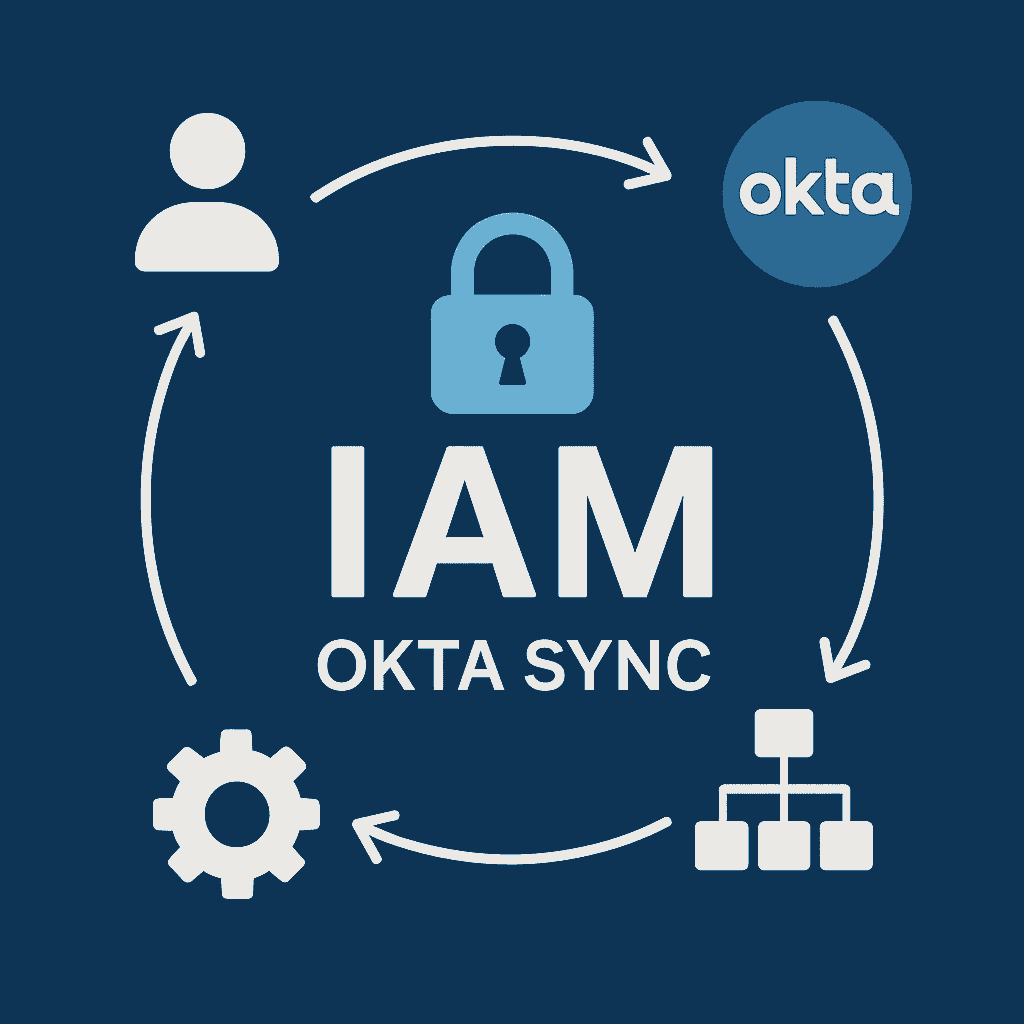Organizations using Microsoft Entra ID (formerly Azure AD) as their primary identity provider often need to provide users access to applications managed by Okta. This federation enables seamless single sign-on from Entra ID to Okta-managed applications using SAML 2.0.
Prerequisites
- Microsoft Azure tenant with Entra ID P1 license or higher
- Okta organization with administrative access
- Global Administrator permissions in Entra ID
- Super Admin permissions in Okta
Architecture Overview
Identity Provider: Microsoft Entra ID (manages users and authentication)
Service Provider: Okta (provides applications and services)
Flow: User → Entra ID (authenticate) → Okta (federate) → Applications
Step 1: Create Enterprise Application in Entra ID
Navigate to Enterprise Applications
- Log into Azure Portal (portal.azure.com)
- Navigate to Microsoft Entra ID
- Select Enterprise applications from the left menu
- Click New application
Create Custom Application
- Select Create your own application
- Configure application settings:
- Name:
Okta Federation(or descriptive name) - Integration type: Select “Integrate any other application you don’t find in the gallery”
- Name:
- Click Create
Configure Single Sign-On
- After creation, navigate to Single sign-on in the application menu
- Select SAML as the authentication method
Generate SAML Certificate
In Section 3 (SAML Signing Certificate):
- Click Edit pencil icon
- Click New Certificate
- Set expiration (default 3 years is acceptable)
- Click Save
- Download certificate in Base64 format
- Save certificate file securely
Collect Identity Provider Details
From Section 4 (Set up [Application Name]):
- Copy Login URL
- Copy Microsoft Entra Identifier
Keep these values accessible for Okta configuration.
Step 2: Configure SAML Identity Provider in Okta
Create New Identity Provider
- Log into Okta Admin Console
- Navigate to Security > Identity Providers
- Click Add Identity Provider
- Select SAML 2.0 IdP
Basic Configuration
Identity Provider Settings:
- Name:
Entra ID Federation - IdP Username:
idpuser.subjectNameId - Filter: Leave blank
- Match against:
Okta username
Account Link and Provisioning Settings
Account Link Policy:
- ✓ Automatic (recommended for seamless experience)
Provisioning Policy:
- ✓ Auto-Link users
- ✓ Create users if one does not exist (JIT)
- ✓ Update attributes for existing users
Group Assignment:
- Assign to Groups: Create or select group for federated users
- This enables targeted policies for Entra ID users
SAML Protocol Configuration
Certificate:
- X.509 Certificate: Upload Base64 certificate from Entra ID
Endpoints:
- IdP Issuer URI: Microsoft Entra Identifier (from Step 1)
- IdP Single Sign-On URL: Login URL (from Step 1)
- IdP Single Log-Out URL: Leave blank (optional)
Click Add Identity Provider to create the configuration.
Collect Service Provider Details
After creation, copy the following from the IdP details page:
- Assertion Consumer Service URL
- Audience URI
Step 3: Complete Entra ID Application Configuration
Configure Basic SAML Settings
Return to Entra ID Enterprise Application > Single sign-on
In Section 1 (Basic SAML Configuration):
- Click Edit
- Enter values from Okta IdP:
- Identifier (Entity ID): Audience URI from Okta
- Reply URL (Assertion Consumer Service URL): ACS URL from Okta
- Click Save
Configure User Attributes & Claims
In Section 2 (User Attributes & Claims):
Default claims are provided, but note the namespaces for Okta mapping:
- Email:
http://schemas.xmlsoap.org/ws/2005/05/identity/claims/emailaddress - Given Name:
http://schemas.xmlsoap.org/ws/2005/05/identity/claims/givenname - Surname:
http://schemas.xmlsoap.org/ws/2005/05/identity/claims/surname - Name:
http://schemas.xmlsoap.org/ws/2005/05/identity/claims/name
Step 4: Configure Attribute Mapping in Okta
Access Profile Editor
- In Okta Admin Console, navigate to Directory > Profile Editor
- Find your Entra ID Identity Provider profile
- Click Mappings > Configure User mappings
Reset Existing Mappings
Clear Current Mappings:
- For all attributes except login, click the blue dropdown arrow
- Select Do not map to clear existing mappings
Delete and Recreate Custom Attributes
Delete existing custom attributes and recreate:
Email Attribute:
- Variable Name:
email - External Name:
http://schemas.xmlsoap.org/ws/2005/05/identity/claims/emailaddress - Attribute Type:
string
First Name Attribute:
- Variable Name:
firstName - External Name:
http://schemas.xmlsoap.org/ws/2005/05/identity/claims/givenname - Attribute Type:
string
Last Name Attribute:
- Variable Name:
lastName - External Name:
http://schemas.xmlsoap.org/ws/2005/05/identity/claims/surname - Attribute Type:
string
Add Required Entra ID Claims
Based on authentication logs analysis, create additional custom attributes:
Tenant ID:
- Variable Name:
tenantId - External Name:
http://schemas.microsoft.com/identity/claims/tenantid
Identity Provider:
- Variable Name:
identityProvider - External Name:
http://schemas.microsoft.com/identity/claims/identityprovider
Object Identifier:
- Variable Name:
objectIdentifier - External Name:
http://schemas.microsoft.com/identity/claims/objectidentifier
Authentication Methods:
- Variable Name:
authMethods - External Name:
http://schemas.microsoft.com/claims/authnmethodsreferences
Configure Profile Mappings
- Navigate to Profile Editor > [IdP Profile] > Mappings
- Map the following attributes:
- firstName →
user.firstName - lastName →
user.lastName - email →
user.email - displayName →
user.displayName
- firstName →
Step 5: Assign Users and Test Federation
Assign Users in Entra ID
- In Entra ID Enterprise Application, navigate to Users and groups
- Click Add user/group
- Select target users or groups for Okta access
- Assign appropriate roles if needed
Test Authentication Flow
Initial User Experience:
- User navigates to myapps.microsoft.com
- Authenticates with Entra ID credentials
- Clicks Okta Org tile
- First-time users may need to:
- Complete additional authentication challenges
- Set up Okta profile information
- Successfully lands on Okta dashboard with assigned applications
Verification Steps
Administrative Verification:
- Check Okta System Log for successful SAML assertions
- Verify user creation in Directory > People
- Confirm group assignment for federated users
- Test application access from Okta dashboard
Troubleshooting Common Issues
SAML Response Errors
“General Nonsuccess” Error:
- Review attribute mappings in Okta Profile Editor
- Verify all required claims are mapped correctly
- Check Okta System Log for detailed error messages
“Unable to JIT” Error:
- Confirm user email format matches Okta username requirements
- Verify email attribute mapping is correct
- Check for conflicting existing users in Okta
Authentication Failures
Certificate Issues:
- Verify certificate is in Base64 format
- Check certificate expiration date
- Ensure certificate upload completed successfully
Endpoint Configuration:
- Confirm Issuer URI matches Microsoft Entra Identifier exactly
- Verify Sign-On URL is correct from Entra ID
- Check for trailing slashes or extra characters
User Provisioning Problems
Missing Attributes:
- Review Entra ID claims configuration
- Verify namespace URLs match exactly
- Check attribute case sensitivity
Group Assignment Issues:
- Confirm federated user group exists in Okta
- Verify group policies are configured correctly
- Check application assignments for federated user groups
Security Considerations
Certificate Management
- Monitor certificate expiration dates
- Implement certificate rotation procedures
- Use strong certificate key lengths (2048-bit minimum)
User Access Controls
- Implement conditional access policies in Entra ID
- Configure appropriate Okta policies for federated users
- Regular access reviews for cross-platform users
Monitoring and Auditing
- Enable comprehensive logging in both platforms
- Monitor for unusual authentication patterns
- Implement automated alerting for failed federations
Advanced Configuration Options
Conditional Access Integration
- Configure Entra ID conditional access for Okta access
- Implement device-based access controls
- Set up location-based restrictions
Multi-Factor Authentication
- Configure MFA requirements in Entra ID
- Set up Okta MFA policies for federated users
- Implement step-up authentication scenarios
This federation enables seamless user experience while maintaining security boundaries between Microsoft and Okta identity platforms, providing centralized access management across hybrid identity infrastructures.









